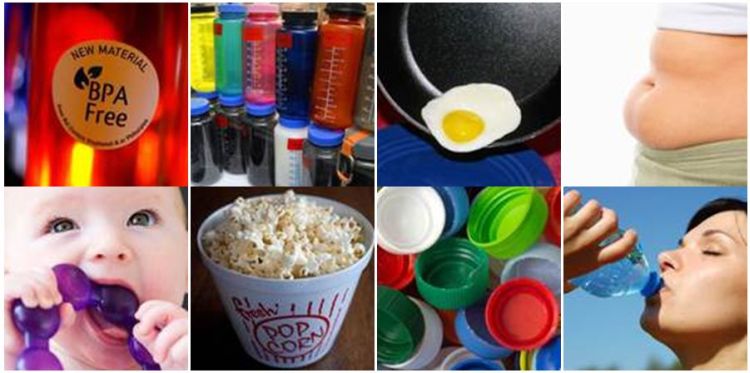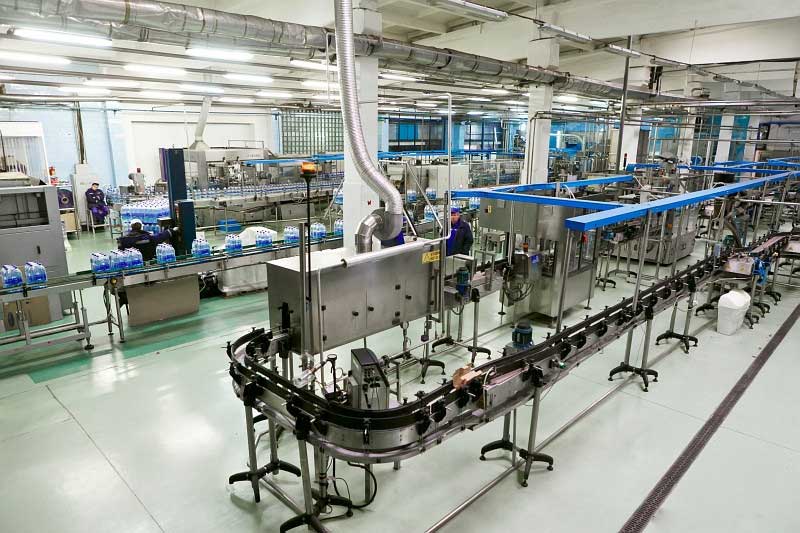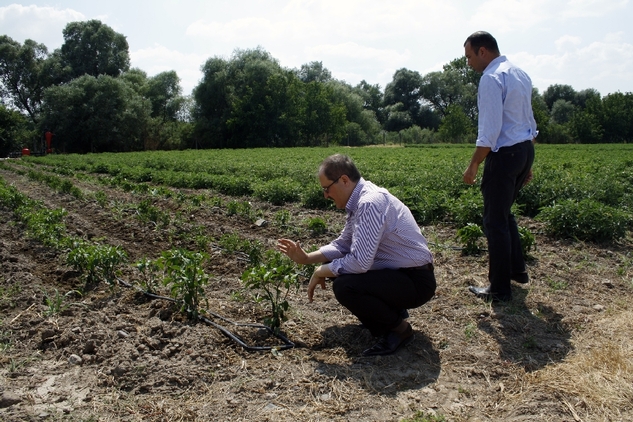We are facing a serious threat!
Regardless of our jobs, we have to take immediate action against obesity. Obesity is perhaps the most serious threat that our generations are now facing. Obesity is rising steadily around the world.
Causes of more than half of the modern diseases like diabetes, heart disorders, respiration problems, blood pressure problems we face today are usually related to eating habits. Obesity itself is a problem. Foods that contain GMOs, fast food, bad eating habits are considered the most important factors that enable obesity figures increase.
Convincing evidence suggests that diet and activity level are not the only factors in this trend—chemical “obesogens” may alter human metabolism and predispose some people to gain weight.As per a recent report of WHO (World Health Organization), Turkey has now become the first in Europe and 8th in the World for increasing obese population. Turkey has now a younger population but after 30 years, the average age will be higher and this will spark more health problems, which will trigger more social, economical and psychological issues. So what is the solution? How can we avoid obesity?
Many in the medical and exercise physiology communities remain wedded to poor diet and lack of exercise as the sole causes of obesity. However, researchers are gathering convincing evidence of chemical “obesogens”—dietary, pharmaceutical, and industrial compounds that may alter metabolic processes and predispose some people to gain weight.
We said that Obesity is itself a problem. As shortly explained above, fast foods and bad habits may be factors that cause obesity. However, some chemicals that are used in processes foods are also life threatening. Science Magazine defined several chemicals that open the doors to obesity. These chemicals that are called “Obesogen” change the process of body and cause fatting.
Most known or suspected obesogens are endocrine disruptors. Many are widespread, and exposures are suspected or confirmed to be quite common. In one 2010 study, Kurunthachalam Kannan, a professor of environmental sciences at the University at Albany, State University of New York, documented organotins in a designer handbag, wallpaper, vinyl blinds, tile, and vacuum cleaner dust collected from 24 houses. Phthalates, plasticizers that also have been related to obesity in humans, occur in many PVC items as well as in scented items such as air fresheners, laundry products, and personal care products.
A Brief List of Potential Obesogens
1.Bisphenol-A (BPA)
Present in many common household products such as eyeglasses and compact discs, BPA is also commonly found in the epoxy lining of metal food cans; polycarbonate plastic food containers, including some baby bottles; microwave ovenware; and eating utensils. Because BPA is an unstable compound and is also lipophilic (fat-seeking), it can leach into food products, especially when heated (Brotons, 1995). Once in food, BPA can move quickly into people — a particular concern for women of childbearing age and young children. Two studies have explored the effects of increased ingestion of food and drink packaged in materials containing endocrine-disrupting compounds. Both found rapid increases (within a few days to a week) in BPA levels in urine and/or blood samples taken from subjects who intentionally increased their intake of common foods and drinks packaged in BPA-containing products (Carwile, 2009; Smith, 2009). Another study took the opposite approach and demonstrated that just a three-day period of limiting intake of packaged foods decreased the concentrations of BPA found in urine by an average 65 percent (Rudel, 2011)
2. Phthalate
Phthalates (pronounced THA-lates) are a group of chemicals that can make products (usually plastics) softer and more flexible. They are sometimes called plasticizers, though there are many other types of plasticizers too.
Phthalates are used in a range of products, including:
- PVC (polyvinyl chloride) plastics (a specific type of plastic used in some products, such as shower curtains)
- medical plastics, such as PVC IV bags and tubes
- children’s toys and supplies
- cosmetics, such as nail polish and perfumes.
You can be exposed to phthalates by using products containing them. Phthalates aren’t chemically connected with the plastic that contains them, which means they could possibly leach out of the products.
People can be exposed to higher levels of phthalates during medical procedures because some medical tubing and other devices are made with PVC plastics. Children can be exposed to phthalates by sucking on toys made of plastics that contain phthalates. In 1998, Health Canada issued a warning about the phthalate called DINP that was used in toys that kids might put in their mouths.
Read more: http://www.cancer.ca/en/prevention-and-screening/be-aware/harmful-substances-and-environmental-risks/phthalates/?region=on#ixzz2zmhBkroh
Read more: http://www.cancer.ca/en/prevention-and-screening/be-aware/harmful-substances-and-environmental-risks/phthalates/?region=on#ixzz2zmgx6WJa
3. Atrazine
ATZ (Atrazine) might be an important contributing factor to the obesity epidemic in the World . It damages mitochondrial function, affects insulin signaling, and induces insulin resistance and obesity, especially when exposure is associated with a high-fat diet. Banned in Europe, but found around the United States, atrazine slows thyroid hormone metabolism. Another culprit found in tap water, tributylin, a fungicide painted on the bottoms of boats, stimulates fat cell production.
4. Organotinler
The major input of TBT into the marine environment is through its use as a biocide. TBT can leach into seawater from the hulls of ships coated with TBT-based antifoulant marine paints, particularly in area of high shipping activity such as ports, marinas and shipyards (see above). Although its use is now banned, inputs into the aquatic environment via this route are likely continue in countries or regions not in compliance with the ban, or from old or disused vessels or installations. In addition to direct leaching from hulls, dry docks (where the hulls of ships are cleaned by sandblasting) and wastewater treatment plants (where organotin compounds may be discharged in the effluent) also represent potentially important sources to the marine environment. TBT can bond to suspended material and is deposited in sediments, and depending on the conditions, is degraded to DBT or MBT (see above), but dredging activities may resuspend organotins bound in sediments back into the water column (Canellas-Bolta et al., 2005). The relative persistence of organotins and their accumulation in
sediments means they are available for uptake by fish and shellfish, particularly benthic (“bottom-living”) organisms associated with sediment (EFSA, 2004, FSA, 2005) and have been found in marine organisms from around the world (see above). Concentrations of contaminants of fish and shellfish can vary with the type of shellfish, the geographical location and the spawning period (FSA, 2005).
Avoidance of PVC in the home should help to minimise the amount of organotin stabilisers present in
household air and dust. Similarly, exposure may be reduced by avoiding “antifungal” treated clothing and footwear, although if this is part of a recommended strategy to treat a fungal infection some antifungal treatment should be maintained for articles of clothing that cannot be washed at higher temperatures to destroy the residual fungus.
5. Perfluorooctanoic Asit (PFOA)
Still another widespread obesogen is perfluorooctanoic acid (PFOA), a potential endocrine disruptor and known PPARγ agonist. “Pretty much everyone in the U.S. has it in their blood, kids having higher levels than adults, probably because of their habits. They crawl on carpets, on furniture, and put things in their mouth more often,” explains NIEHS biologist Suzanne Fenton. PFOA is a surfactant used for reduction of friction, and it is also used in nonstick cookware, waterproof clothing, Scotchgard™ stain repellent on carpeting, mattresses, and microwavable food items. Perfluorooctanoic acid (PFOA) – leads to obesity in later life. It also is known to affect thyroid glands, which are important regulators of hormones that control weight. Found mainly in products like non-stick pans, it’s also hidden in microwave popcorn bags and pizza boxes.
6.Formaldehide
Formaldehyde is a colorless, flammable, strong-smelling chemical that is used in building materials and to produce many household products. It is used in pressed-wood products, such as particleboard, plywood, and fiberboard; glues and adhesives; permanent-press fabrics; paper product coatings; and certain insulation materials. In addition, formaldehyde is commonly used as an industrial fungicide, germicide, and disinfectant, and as a preservative in mortuaries and medical laboratories. Formaldehyde also occurs naturally in the environment. It is produced in small amounts by most living organisms as part of normal metabolic processes.
When formaldehyde is present in the air at levels exceeding 0.1 ppm, some individuals may experience adverse effects such as watery eyes; burning sensations in the eyes, nose, and throat; coughing; wheezing; nausea; and skin irritation. Some people are very sensitive to formaldehyde, whereas others have no reaction to the same level of exposure.
Although the short-term health effects of formaldehyde exposure are well known, less is known about its potential long-term health effects. In 1980, laboratory studies showed that exposure to formaldehyde could cause nasal cancer in rats. This finding raised the question of whether formaldehyde exposure could also cause cancer in humans. In 1987, the U.S. Environmental Protection Agency (EPA) classified formaldehyde as a probable human carcinogen under conditions of unusually high or prolonged exposure . Since that time, some studies of humans have suggested that formaldehyde exposure is associated with certain types of cancer. The International Agency for Research on Cancer (IARC) classifies formaldehyde as a human carcinogen). In 2011, the National Toxicology Program, an interagency program of the Department of Health and Human Services, named formaldehyde as a known human carcinogen in its 12th Report on Carcinogens.
Solution to our above question (How can we avoid obesity?) is to awaken the public. People must be aware of what and how they consume. In other words, Halal and Tayyib way of living is the solution.
How to avoid obesogens:
- Consume Halal and Tayyib food
- Buy wild fish, not the farm fish.
- Install a granular activated carbon filter on your faucet to filter out chemicals such as atrazine.
- Use aluminum water bottles or those that are BPA-free.
- Steer clear of plastics with the number 3 or 7 on the bottom, which may leach BPA. Instead look for the numbers 1, 2, 4, 5, and 6, which are unlikely to contain BPA.
- Keep water bottles cool (warm temperatures increase BPA leaching) and never microwave plastic.
- Eat fewer canned foods. Opt for frozen or fresh instead. Tuna can be found in pouches that do not contain BPA.
- Get rid of your non-stick pans if possible. If you must use a Teflon pan, never use a metal implement on it that can scratch the surface and release the chemicals inside, and throw away any scratched non-stick pans.
- Buy meats straight from the butcher counter (instead of pre-packaged) and ask that they wrap them in brown paper.
- Skip the air fresheners, open the windows, and try a vase of dried lavender instead.
References:
http://www.gidaraporu.com/plastik-kaplar-risk-tasiyor_g.htm
http://www.gidaraporu.com/konforlu-evler_g.htm
http://www.ncbi.nlm.nih.gov/pmc/articles/PMC3279464/
http://www.foodproductiondaily.com/news/ng.asp?n=60333-common-plastics-packaging
http://www.kimyamuhendisi.com/content/view/246/1
http://www.wikipedia.org/wiki/Bisphenol_A
http://www.cancer.gov/cancertopics/factsheet/Risk/formaldehyde
http://www.plosone.org/article/info%3Adoi%2F10.1371%2Fjournal.pone.0005186
http://www.epa.gov/mwg-internal/de5fs23hu73ds/progress?id=uWa3qLkDOi
http://www.doctoroz.com/videos/understanding-obesogens?page=2
http://www.doctoroz.com/videos/understanding-obesogens?page=3





